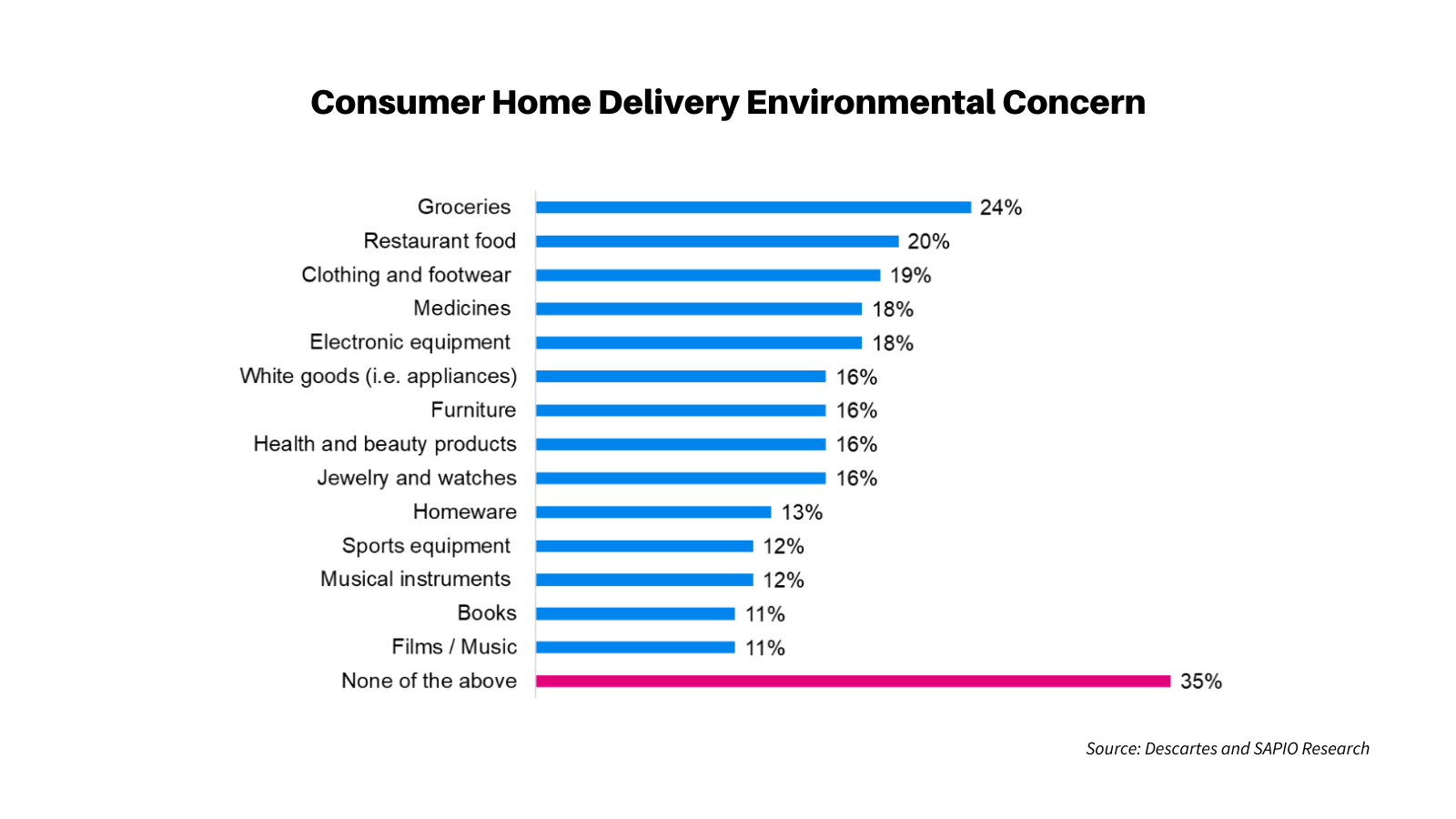
Visit Our Sponsors |
|
|
|
|
|
|
|
|
|
|
|
|
|
|
|
|
|
|
|
|
|
|
|
|
|
|
|
|
|
|
|
|
|
|
|
|
|
|
|
|

In a time of increasing awareness of climate change and the environment, no part of the supply chain is under greater scrutiny than home delivery.
Consumers today are making more purchasing decisions on the basis of environmental impact. Descartes and SAPIO Research recently conducted a study of e-commerce and home-delivery consumer sentiment in Europe and North America. The 8,000 participants had definite opinions about the importance of the environment.
The good news is that many were open to delivery options that not only helped the environment, but were lower cost for the retailer. There’s a clear opportunity to create a win-win-win delivery proposition where the environment, the consumer and the retailer all benefit.
Overall, according to the study, 65% of respondents think twice about ordering online due to the environmental impact (see Figure 1). Environmental awareness is greatest in Europe, where France (78%) and Germany (77%) are the most concerned, while Canada (60%) and the U.S. (57%) are the least, but still show significant numbers. Age also plays an important role, with 18-24 year-olds (85%) and 25-35 year-olds (75%) having the most concern about the environment. The types of deliveries associated with the greatest environmental concern were grocery (24%) and restaurant food (20%).
Consumers’ message to retailers is that they will favor those who demonstrate that they’re more environmentally friendly. Retailers need a comprehensive environmental plan for home delivery, and they need to communicate it — along with its results — to consumers. This is especially true for retailers targeting younger generations and European countries.

Consumers also recognize that they can help, and are willing to take delivery options that benefit the environment. One third of consumers are interested (34% quite/very interested) in combining orders into a single delivery at the end of week, or combining orders for a single delivery when there are multiple deliveries in their area (33% quite/very interested). It’s easy to understand how combining orders into a single delivery benefits the environment. Less mileage to make deliveries means less fuel and carbon dioxide in the air and, hence, more environmentally friendly deliveries.
Looking beyond the results of the study, another environmentally friendly home delivery approach is “eco delivery” time windows. They are delivery options that are adjacent to existing delivery appointments, and hence require less distance and fuel to execute. Because of the shorter distance to make the delivery — typically around 20% versus regular deliveries — eco deliveries are among the most carbon- and cost-effective options.
Consumers have unique delivery personas, and providing them with choices can help both the environment and the bottom line. Not everyone will take eco-friendly delivery options, but it’s important to understand that even a small percentage of consumers can make a significant difference. Just considering the demographic response in the survey, more and more consumers over time will be looking for eco-friendly delivery options.
Thinking more broadly, consumers want retailers to report on their progress toward reducing environmental impact. Logistics improvement programs should be considered in this reporting because they’re an excellent source of environmental performance improvement. Whether it’s improving transportation efficiency or transforming paper-based processes, such programs are highly likely to improve the environment at the same time. Every logistics efficiency program, therefore, should not only be associated with a reduction in distance, vehicles, fuel, paper and vehicle maintenance costs, but also with a contribution to a better environment.
Increasingly, consumers are judging the sustainability of retailers and making purchasing decisions based upon it. Rather than looking at reducing environmental impact as a challenge, retailers need to consider the opportunities that exist to reduce the supply chain impact on the environment and operational costs at the same time. Consumers are open to taking delivery options that can significantly reduce a delivery’s carbon footprint, and the opportunity exists for retailers to provide the eco-friendly choices that benefit everyone involved. Retailers need to move quickly on this opportunity while there’s still time for it to be a brand and competitive enhancer.
Chris Jones is executive vice president of industry and services at Descartes.
Read more of SupplyChainBrain's 2022 Supply Chain ESG Guide here.
RELATED CONTENT
RELATED VIDEOS
Timely, incisive articles delivered directly to your inbox.







